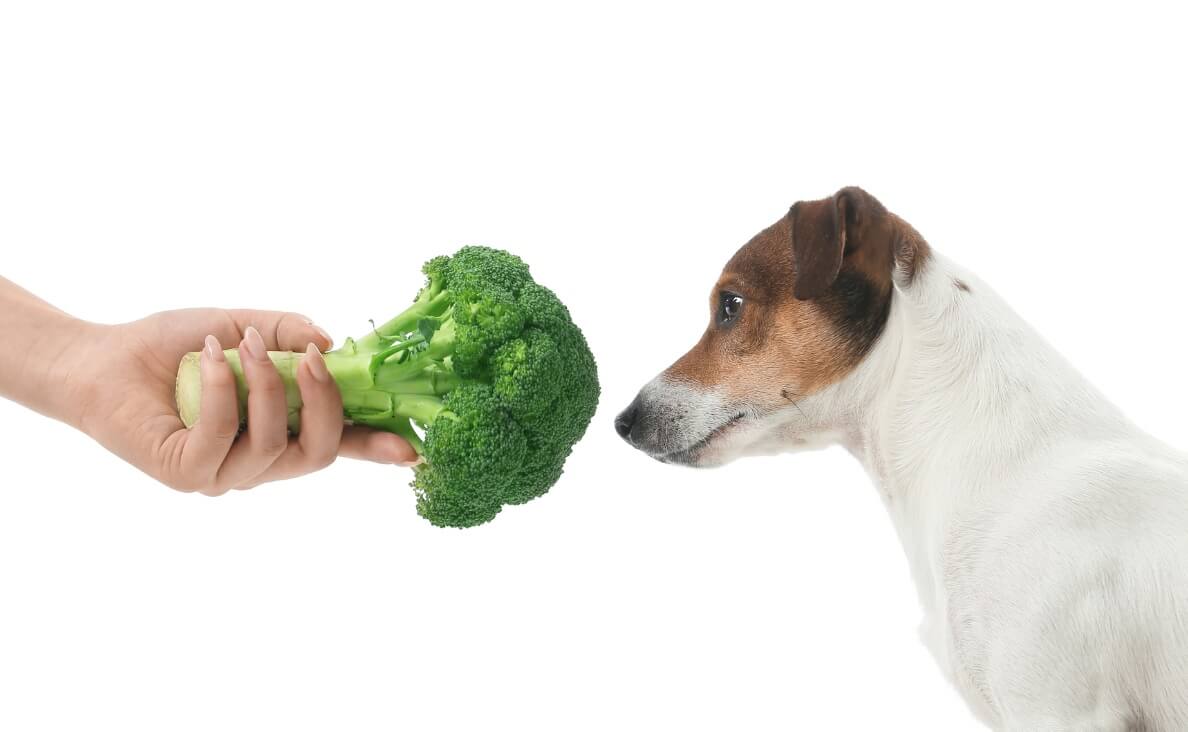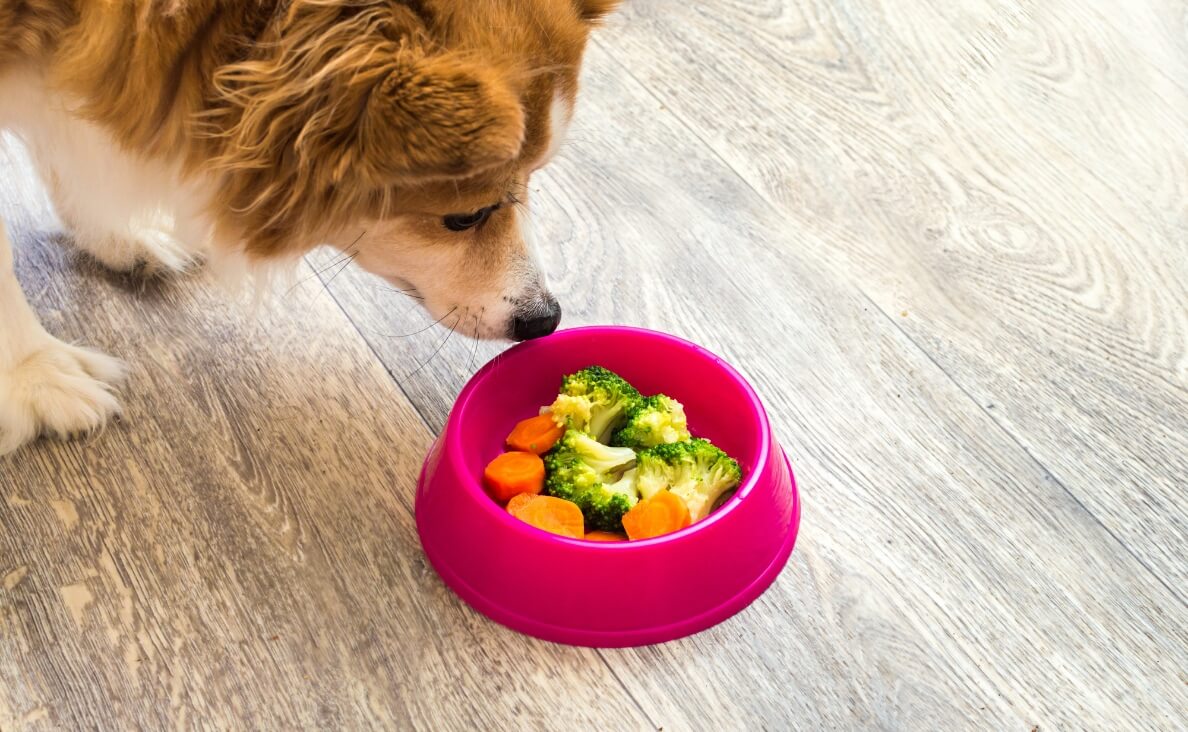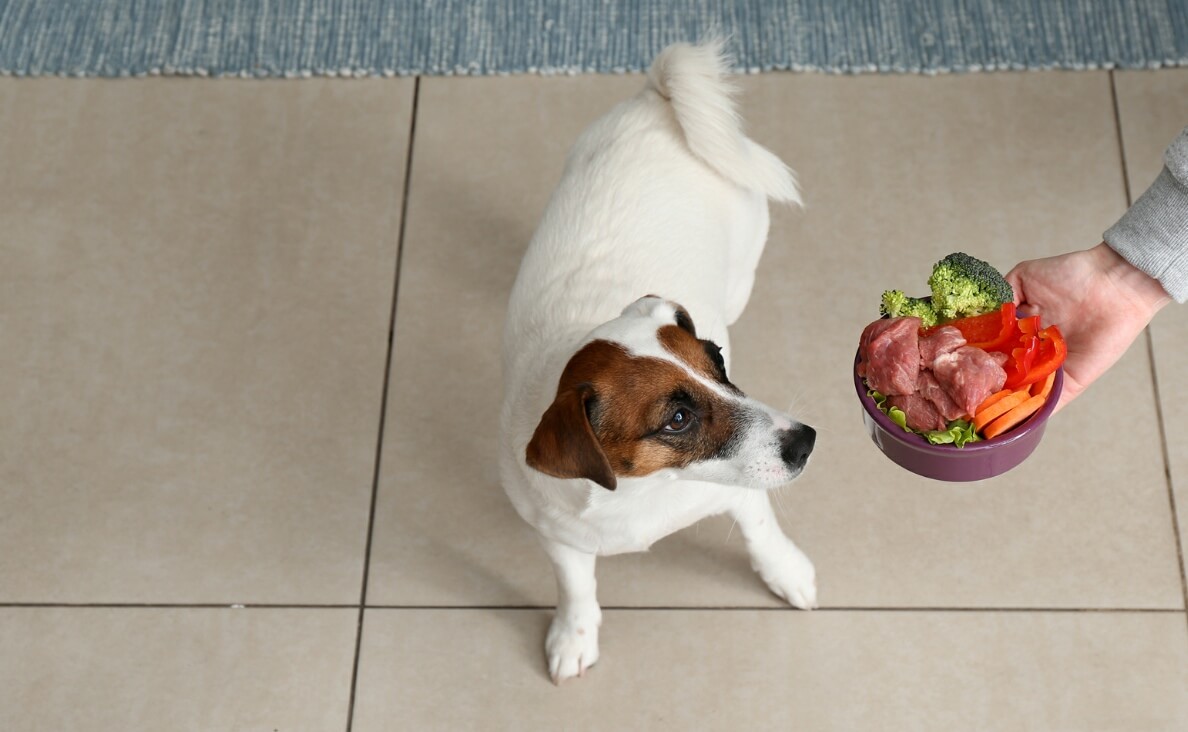
When it comes to our furry friends, we often find ourselves pondering over what is safe for them to eat and what isn’t. A common question among dog owners is about the safety of feeding their dogs vegetables. Specifically, can dogs eat broccoli, and more broadly, how can we safely add vegetables to your dog’s diet? Let’s delve into this topic and discover the best ways to include these nutritious plants in our dogs’ meals.
Related: The Ultimate Guide to Foods You Can and Can’t Feed Your Dog
Understanding the Benefits of Vegetables for Dogs
Before we specifically address broccoli, it’s essential to understand why you might want to add vegetables to your dog’s diet in the first place. Vegetables are a rich source of vitamins, minerals, and fiber. They can offer a low-calorie option for dogs who need to maintain or lose weight, and they also provide essential nutrients that support overall health.
Can Dogs Eat Broccoli?
Yes, dogs can eat broccoli. This vegetable is safe for dogs in small quantities and can be a healthy addition to their diet. Broccoli is high in fiber and vitamin C and low in fat. It is important, however, to understand how to serve it to your dog safely.

How to Safely Add Broccoli to Your Dog’s Diet
When adding broccoli to your dog’s diet, it’s crucial to follow a few guidelines:
– Moderation is key: Broccoli should make up less than 10% of your dog’s total daily intake. Overconsumption can cause gastrointestinal upset.
– Cook it properly: Steaming or boiling broccoli makes it easier for dogs to digest. Avoid adding oils, seasonings, or sauces.
– Introduce it gradually: Start with small amounts to ensure your dog doesn’t have an adverse reaction.
Other Vegetables to Consider
In addition to broccoli, there are several other vegetables you can safely add to your dog’s diet. These include:
– Carrots: Great for their teeth, high in fiber and vitamin A.
– Green Beans: Low in calories and high in iron and vitamins.
– Cucumbers: Good for overweight dogs, as they are low in calories and fats.
– Pumpkin: Great for digestion due to its high fiber content.

How to Add Vegetables to Your Dog’s Diet Effectively
Introducing vegetables to your dog’s diet should be done thoughtfully. Here are some tips for doing so effectively:
- Start Slowly: Introduce new vegetables in small amounts to see how your dog reacts.
- Mix with Their Regular Food: This can make it easier for them to adjust to the new taste and texture.
- Keep it Simple: Avoid adding any seasoning or cooking vegetables with potentially harmful ingredients.
- Consult Your Veterinarian: Before making any significant changes to your dog’s diet, it’s always best to consult with a vet.
Creative Ways to Incorporate Vegetables
Getting your dog to eat vegetables can sometimes be challenging, but there are creative ways to make them more appealing:
– Make vegetable treats: Bake them into homemade dog treats.
– Blend into a smoothie: Mix vegetables with dog-safe fruits and plain yogurt.
– Use as a food topper: Add steamed vegetables on top of their regular food.
Common Mistakes to Avoid
When trying to add vegetables to your dog’s diet, there are a few common mistakes you should avoid:
– Overfeeding: Too much of even a good thing can be bad. Stick to the 10% rule.
– Ignoring Allergies: Just like humans, dogs can be allergic to certain foods.
– Forgetting Variety: Feeding a variety of vegetables ensures a range of nutrients.

Final Thoughts
Incorporating vegetables into your dog’s diet, like broccoli, can be beneficial for their health. However, it’s important to do so with care and moderation. Always remember to consult with your veterinarian, introduce new foods slowly, and pay attention to how your dog reacts to these additions. By following these guidelines, you can safely and effectively add vegetables to your dog’s diet, ensuring they reap the nutritional benefits while enjoying their meals to the fullest.
What vegetables does your dog like to eat? Please comment below…

 What to Do If Your Dog is a Picky Eater
What to Do If Your Dog is a Picky Eater Healthy Easy Homemade Dog Treats
Healthy Easy Homemade Dog Treats Does Pumpkin Help with Dog Diarrhea?
Does Pumpkin Help with Dog Diarrhea? 5 Signs Your Dog Has Food Allergies
5 Signs Your Dog Has Food Allergies Is Peppermint Safe for Dogs? Everything You Should Know
Is Peppermint Safe for Dogs? Everything You Should Know






Leave a Reply